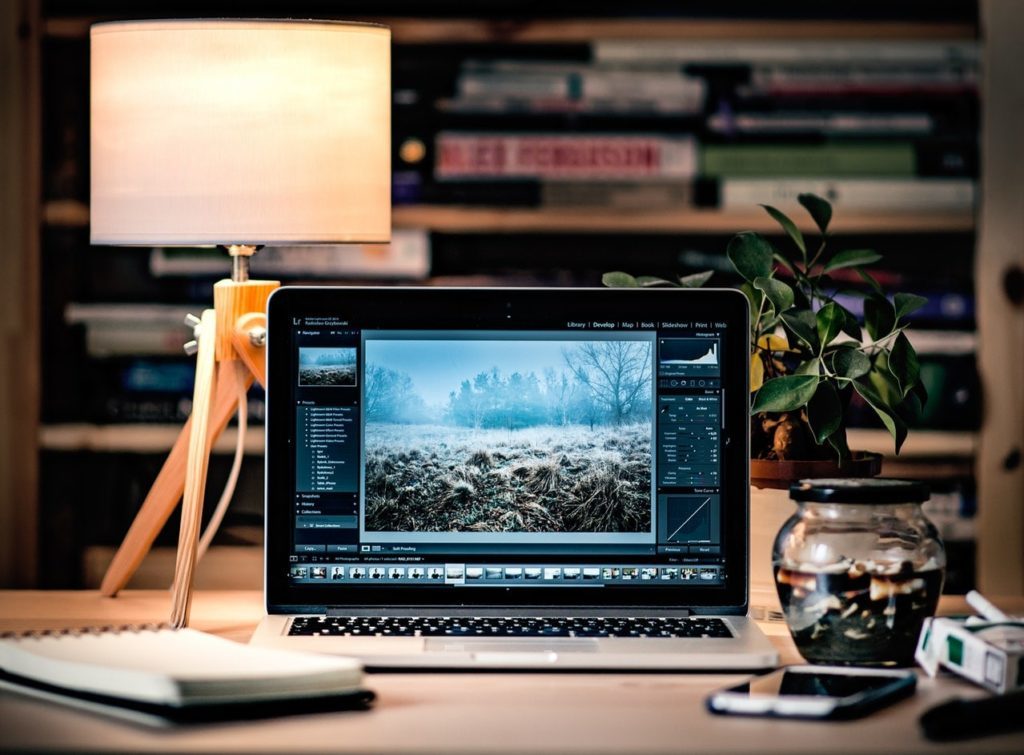In this Article...quick links
Getting ready for a job interview can be stressful. When done via video, whether live or recorded, things can get even worse! While some people might find themselves at ease in front of the camera, others will lose confidence, and therefore their ability to sell themselves. Whatever camp you belong to, one thing is certain: a video interview requires as much preparation as one in-person.
To make sure that the experience doesn’t ruin your chances of success, we are sharing 7 tips that can help you prevent awkward moments or technical pitfalls, so you can master your next video interview!
1. Dress as you would for an in-person interview
Is this next sentence grammatically correct? Please check.You need to condition your mind for success by creating the right mindset and personal image. You want to feel professional, and a big part of that is dressing appropriately (remember, they can still see you). So just like you would for a face to face interview, pay a special attention to your choice of clothes and make sure you reflect the company’s dress code.
Indeed, even “hidden” behind your laptop, the way you dress will influence the way you think and present. Sure, the recruiter won’t be able to see what is happening under the table… But this doesn’t mean that you can keep your pyjamas on! Wearing professional attire (is there a better word than ‘outfit’?), from head to toe, will make you feel and appear more confident.
Beware though, not all colours look good on video. Avoid black, that will make you look tired, or pastels, that look lacklustre and will make your skin look grey. Choose solid colours over multi-coloured prints or patterns. The jewel-tones colour palette, especially sapphire blue, ruby red or emerald green, is a safe bet as it really pops in front of the camera.
2. Choose a quiet and neutral space
If you worry about noise (that includes your dog snoring) or someone potentially walking in at any time, focusing on your interview might get tricky. You want to ensure that neither you nor the hiring manager will get a chance to be distracted during the interview.
Of course, public places or cafes are not an option. Choose a quiet space with a neutral background. Also, make sure that you will be able to talk freely and that there won’t be unwelcome eavesdroppers nearby. If that sounds like home, great!
Good lighting is also crucial to present your best self to the recruiter. Be careful not to sit in the dark and beware of a strong backlight. Ideally you will have 2 sources of light on either side of you.
3. Check all the tech
Technical failures are everyone’s worst nightmare when it comes to video interviews. You want to avoid them at any cost so don’t be afraid to take all necessary precautions.
You will need to check your audio, your video, and your Internet connection. If you can, try to organise a “live” test with a friend or a member of your family before the day of the interview. This is especially useful if you’re using a different software for the call as this will allow you to identify and fix any issues with your set-up. If possible, also prepare a backup connection.
You might want to double-check your system about half-an-hour before the time of your interview. If something goes wrong during that last minute test, it will give you enough time to try and fix it or at least notify the recruiter by email.
4. Turn off notifications and alerts
It’s all about being 100% focused on the interview, so eradicate any potential source of distraction. Start by turning off all notifications and alerts on your computer.
And of course, don’t forget to turn off your phone! That doesn’t mean switching it to the “silent mode” as you could still be tempted to look at the screen if you receive a call, text message or any other notification.
5. Maintain good eye contact
Once in front of your computer, you might end up staring at the screen to focus on the image of yourself. Try to resist this natural inclination and think about how you look on the interviewer’s screen.
Just like you would if you were sitting in the same room, you need to make and maintain good eye contact, or as we say ‘eye connection’. That will only happen if you look straight at the camera. Also, try to position it at the same level as your eyes so you don’t look up or down at the person or people who you are speaking with.
Of course, you don’t want to stare at the interviewer/s either (and freak him/her out). Like with anything you need to find the right balance. That’s why it’s ok to take some breaks from the camera. A good time to do this is when you’re pausing to consider your response to a particularly important or thought-provoking question. And while you’re at it, remember to smile and have some fun along the way! The interviewer/s want to get a sense of your personality and cultural fit for their organisation as well as your experience and competency for the role.
6. Practise, practise, and practise more
Talking to a camera might not be as natural as making conversation to a person face-to-face. There is no secret to improving the way you appear in front of the camera: you will need to practise and practise again. The more effort and time you put into it, the more natural you will become.
Practising will also help you to be aware and to control your nervous tics, like balancing on your chair, touching your hair, playing with a pen, etc. All these can be very distracting for the interviewer. Instead of listening to what you are sharing, he/she might end up mesmerised by what you’re doing and so not register what you’re saying. The best way to identify twitches is to record yourself before and have a look at yourself.
7. Arrive early
Last but not least, arrive early. Join the interview “room” or be ready for the video call at least 5 minutes before it’s supposed to start, exactly like you would for a face to face interview.
Is your video interview recorded? Then profit from the opportunity to practise even more. You can usually train yourself with a few questions before recording your answers. So use that opportunity to its fullest and only show your very best self to the interviewer/s. After all, you’ve only got one chance to make a stellar first impression…
Good luck!

Belinda is the Co-Founder and Managing Director of SecondNature International. With a determination to drive a paradigm shift in the delivery of presentation skills training both In-Person and Online, she is a strong advocate of a more personal and sustainable presentation skills training methodology.
Belinda believes that people don’t have to change who they are to be the presenter they want to be. So she developed a coaching approach that harnesses people’s unique personality to build their own authentic presentation style and personal brand.
She has helped to transform the presentation skills of people around the world in an A-Z of organisations including Amazon, BBC, Brother, BT, CocaCola, DHL, EE, ESRI, IpsosMORI, Heineken, MARS Inc., Moody’s, Moonpig, Nationwide, Pfizer, Publicis Groupe, Roche, Savills, Triumph and Walmart – to name just a few.



